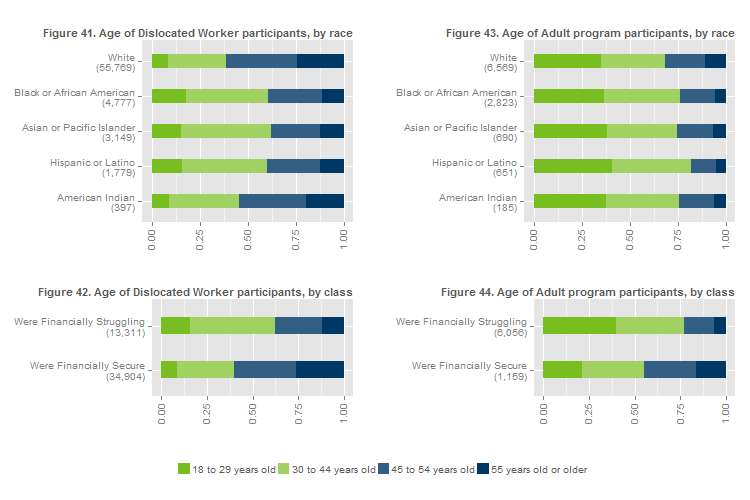Figures 41 through 44 show participants' age at enrollment.

White and American Indian participants tend to be older than other racial groups in the Dislocated Worker program. The majority of white and American Indian participants are over age 45, and nearly a quarter of white participants are over age 55 (Figure 41).
In contrast to Dislocated Worker participants, Adult program participants have a relatively even age breakdown by race (Figure 43). Across both programs, participants who were financially struggling tend to be younger than those who were financially secure prior to participation Figures 42 and 44).
Looking at employment outcomes by race or class alone masks these underlying age differences. All else equal, we expect a 45-year-old worker to earn more than a 25-year-old worker simply because of accumulated experience and likely accumulated education.
On the other hand, multiple program managers reported that their older participants face potential age discrimination. Systematic age discrimination would dampen the earnings of older workers, especially if their years of experience are in a declining occupation with few hiring opportunities.
One program manager, when asked what barriers to employment they see most often, said:
"Well, I think when people come in here, the most common barrier that we hear that they are identifying in their lives is age. A lot of people think or have the perception when they come into the program that the reason they are not getting a job immediately is age related, and we do see more older workers being impacted by layoffs."